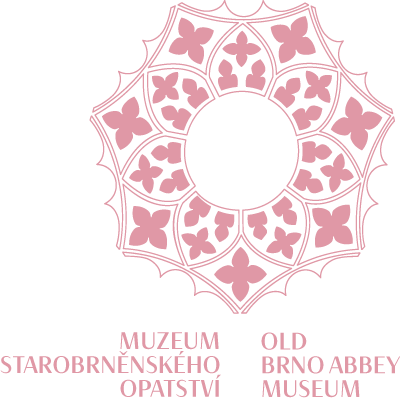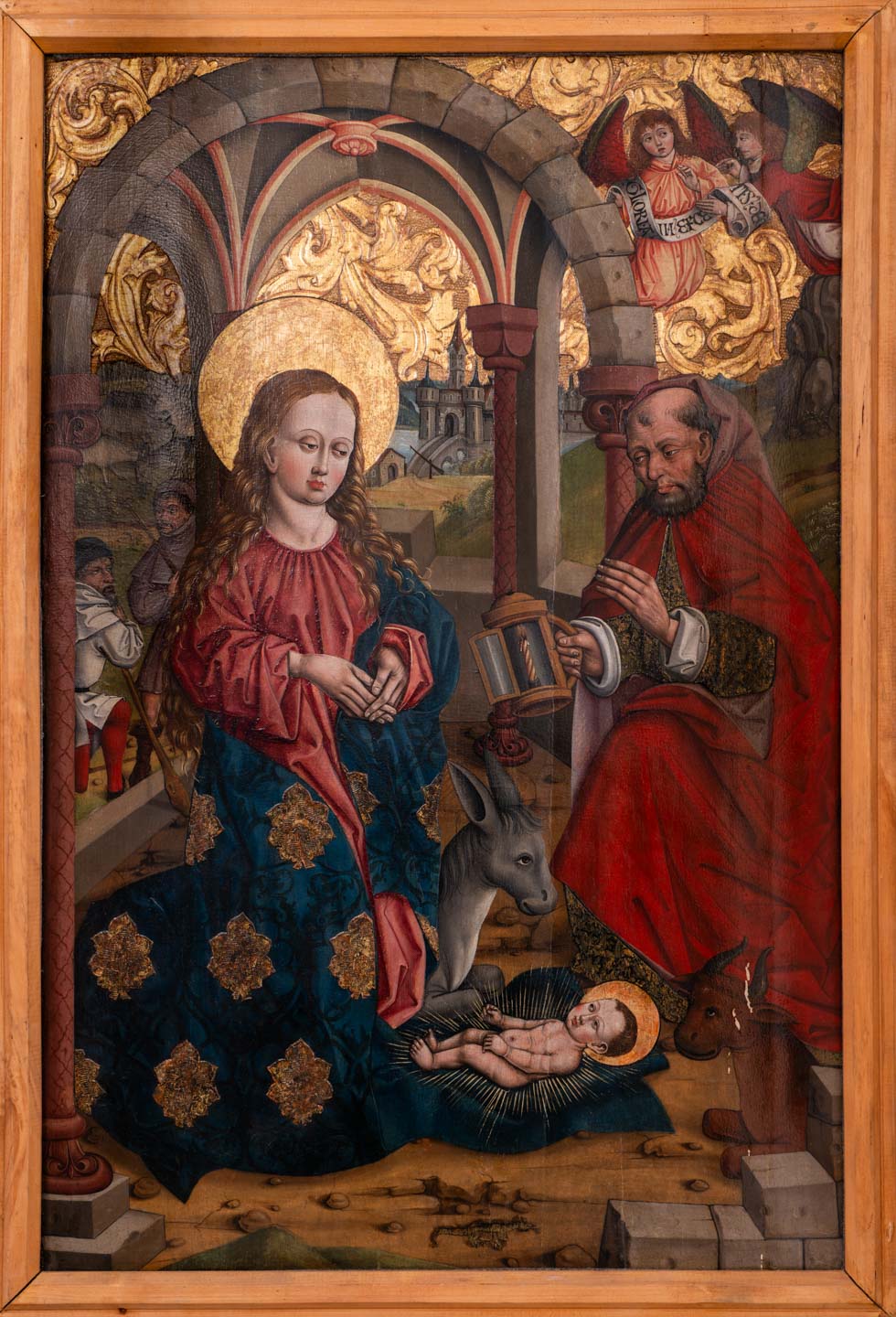The Nativity of the Lord Mocking Christ (reverse)
Brno | around 1490 | tempera, gilt, wooden panel
Apparently from the Cistercian monastery in Old Brno, deposited in the Moravian Gallery in 1956-1996.
The literary model on which the author of the panel painting with the scene of the Nativity of the Lord was based can be considered to be the Revelationes by the founder of the Order of the Most Holy and mystic St. Brigitta of Sweden. In her descriptions of her visions and apparitions, she mentions the scene where the Virgin Mary removes her veil and cloak as childbirth approaches. The simple-haired one then awaits future moments in prayer with some apprehension. At that moment, Christ appears before her. The strong radiance that envelops him overshadows the earthly light of the lantern in St. Joseph’s hand and illuminates the whole space. This is defined by the vaulted ribbed vault of the stable, which reflects contemporary Gothic architecture. Behind the arches, an imaginary landscape unfolds with the stylised city of Bethlehem, around which cattle graze, guarded by two shepherds. The heavens are covered with a gilded background decorated with brocade ornaments, from which two angels emerge bearing the inscriptional band “GLORIA IN EXCELSIS DEO”. The stylistic and compositional concept of the painting refers to a graphic sheet of the same subject from the workshop of the German engraver and painter Martin Schongauer.
The fragmentary preserved theme of the Stomping of Christ is executed on the back of the altar wing, which comes from the altar dedicated to the Virgin Mary. On weekdays, when the wings were closed, they depicted the Passion cycle, and on feast days they brought scenes from the life of the Virgin Mary to the faithful. The altar belonged to the original furnishings of the Cistercian monastery in Old Brno. In the Moravian Gallery there is another plate belonging to this work with the theme of the death of the Virgin Mary and on the reverse with a depiction of the Way to Calvary.


